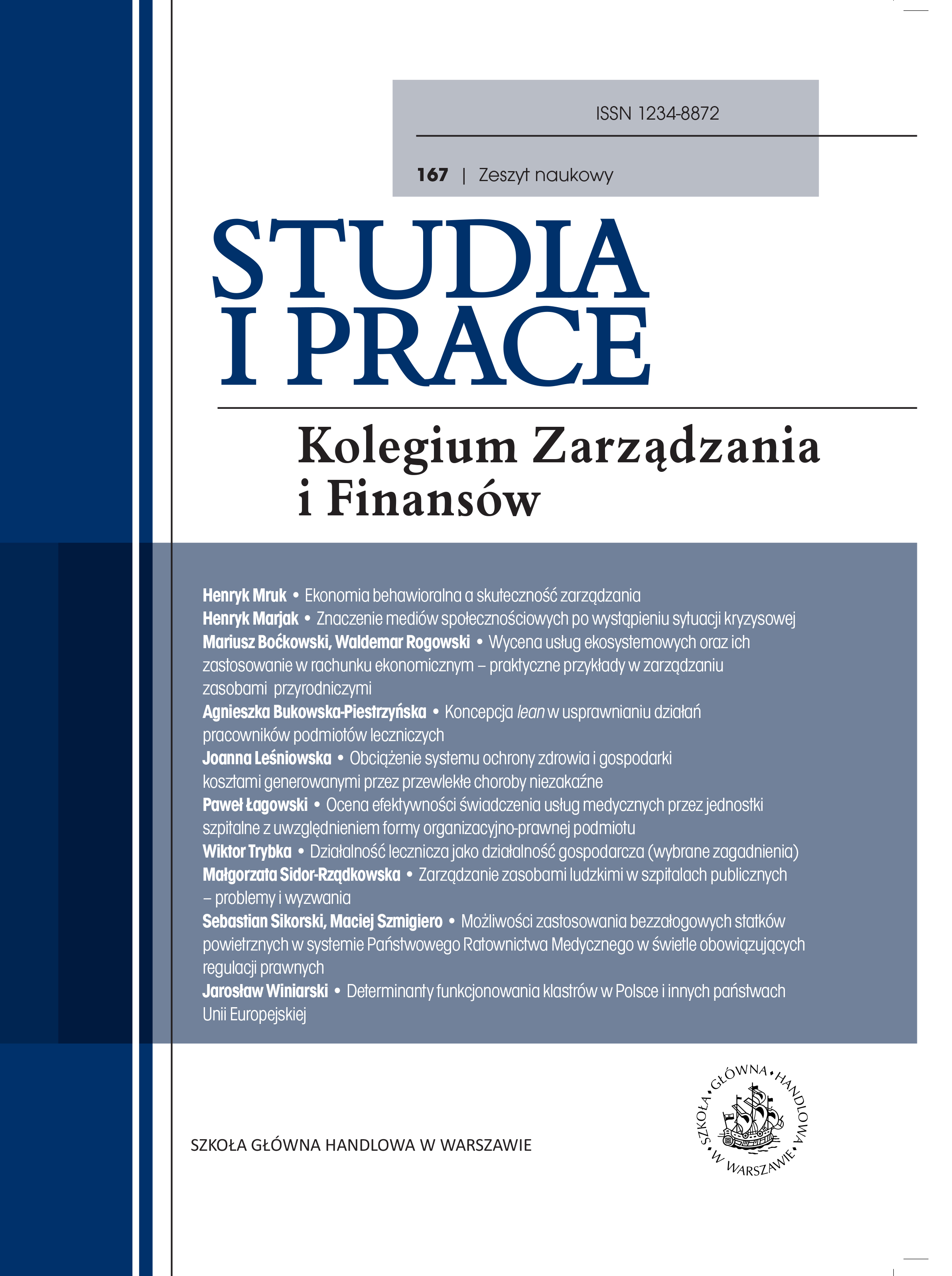Chronic Non-Communicable Diseases: Their Cost Burden to the Healthcare System and Economy
DOI:
https://doi.org/10.33119/SIP.2018.167.5Keywords:
chronic diseases, complications, costs of illnesses, direct costs, indirect costs, productivity lossAbstract
Chronic non-communicable diseases are a serious and increasingly more acute health problem. An important risk factor in their case is the co-existence of two or more acute diseases (complications). As a result, chronic non-communicable diseases entail high medical and economic costs linked with lost productivity of sick employees. The paper aims at estimating the burden posed by all chronic noncommunicable diseases in Poland (direct and indirect costs) to the healthcare system and the economy and, for selected diseases, measuring the cost of their complications. The analysis covers costs of complications of the following diseases: depression episode (F32) and recurrent depressive disorders (F33). That is the first investigation into total costs of all chronic non-communicable diseases carried out ever in Poland. Its results demonstrate that chronic noncommunicable diseases pose not only a significant burden to the healthcare system but also reduce productivity.
Downloads
References
1. Becker G. S., Human Capital: A Theoretical and Empirical Analysis, with Special Reference to Education, The University of Chicago Press, New York 2009.
2. Bloom D. E. i in., The Global Economic Burden of Noncommunicable Disease, World Economic Forum, Geneva 2011.
3. Hogan P., Dall T., Nikolov P., Economic cost of diabetes in the US in 2002, „Diabetes Care” 2003, Vol. 26, No. 3
4. Garattini L. i in., How do Italian Pharmacoeconomists Evaluate Indirect Costs, „Value in Health” 2000, Vol. 3, No. 4.
5. Global status report on noncommunicable diseases 2010. Description of the global burden of NCDs, their risk factors and determinants, WHO, Genewa 2011.
6. Gordois A., Pezzullo L., Cutler H., The Global Economic Costs of Visual Impairrment, Access Economics Pty Limited, Canberra 2006.
7. Grossman M., On the concept of health capital and the demand for health, „Journal of Political Economy” 1972, No. 2.
8. Pikala M., Maniecka-Bryła I., Fifteen-year mortality trends in Poland analysed with the use of standard expected years of life lost, 2000–2014, „Scientific Reports” 2017, Vol. 7, No. 1.
9. Scientific opportunities and public needs: improving priority setting and public input at the National Institutes of Health, National Academy Press, Washington 1998.
10. Walter S., The estimation and interpretation of attributable risk in health research, „Biometrics” 1976, No. 32.
11. World Development Report 1993: Investing in Health, Oxford University Press, New York 1993.
12. Wrona W. i in., Koszty utraconej produktywności w analizach farmakoekonomicznych. Część I. Przegląd systematyczny piśmiennictwa, „Przegląd Epidemiologiczny” 2011, nr 65.
13. Wytyczne oceny technologii medycznych (HTA), Agencja Oceny Technologii Medycznych, Warszawa 2009.
Materiały internetowe
1. Ugaz J. I., Estimating the cost and burden of chronic diseases: A review on the methods and the evidence in LAC, http://new.paho.org/hq/dmdocuments/2011/15_Chronic_Diseases_JorgeUgaz.pdf, dostęp: 11.12.2017.









